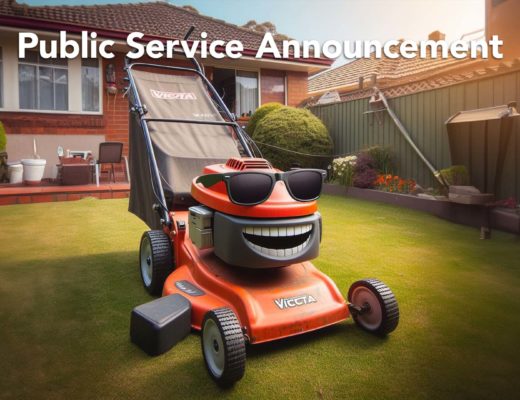As companies and organizations of all sizes realize the importance of a digital presence, video professionals have the opportunity to create video content which enables those companies and organizations to establish and build that presence. Digital content is becoming incredibly relevant in countless ways but what sort of approach can creative professionals on both sides of a corporate video project take to ensure it’s a success?
 To find out, we talked with Matt Marzulo of MarzMotion. MarzMotion provides full service from concept to delivery on creative video projects and pride themselves around being able to deliver professional services for a wide array of budgets.
To find out, we talked with Matt Marzulo of MarzMotion. MarzMotion provides full service from concept to delivery on creative video projects and pride themselves around being able to deliver professional services for a wide array of budgets.
We asked him about the creative process he goes through with corporate clients, what sort of feedback his clients receive and what kind of model might be ideal for companies and organizations with this video content to follow.
ProVideo Coalition: How did you first get involved with corporate clients?
Matt Marzulo: I’ve been around corporate clients since I started working in the field at 16. I was a shooter for a company in Rochester, NY and was able to get hands on experience shooting and editing for local businesses and seeing that world operate behind the scenes. This was 2000 so a lot of the videos were still being delivered to VHS and DVD for local television or inside use for corporate training, etc. A few businesses were ahead of the curve and had their videos streaming on their sites but that idea gained more traction a couple years later.
Is the process much different from how you work on music videos or commercials?
The overall process with a corporate project is similar to other areas of production. If we’re hired to produce the whole project from concept to delivery, we work the same way we would for commercials, music videos, etc. We agree on the budget we are working with, outline the scope of the project and work with the client from the beginning to delivery. Different clients require different levels of involvement. Sometimes we’re working more with creative and producing aspects, and other times we’re just on location shooting and collaborating with another creative agency on board.
Gathering assets for projects also depends on our involvement from the start. Sometimes we’re hired by an outside creative agency to execute filming the production where we just stay in our lane and deliver the footage. Other times we are working as the creative agency directly with the client and will gather their assets such as imagery, music, legacy footage, etc. It really just depends on the job and what our designated role was set to be from the beginning of the project.
Are your corporate customers coming to you with an idea, or are you going to them with a concept?
We have some clients coming to us with ideas and others fully trusting our creative judgment. If the client has a concept they’re set on, our job is to materialize that idea thinking practically in terms of budget and restrictions that are a reality in this line of work. Some clients have great ideas that we love, but in reality aren’t always achievable given budgetary restrictions or the timeline. It’s our job to use our expertise and bring those ideas to a realistic level. We’re trying to reach a happy medium and do the best that can be done given what resources are available.
Tell us about the details of the process that you worked through with a few of your clients. For instance, in the U of A video, was it established that the piece would have specific segments or did that happen in the process of revising the edit?
The process depends on the client and what they are seeking when they contact us. Some clients already have all their ducks in a row and just need the shoot executed, while others are looking to have their project produced from nothing.
With the U of A piece, the concept was pretty much in place and it shaped up as we continued shooting. With pieces like those, you never really know what you’re going to get since you’re dealing with unknown variables going into it. This was a game day so the spot relied on student and player interviews along with establishing shots. Bleacher Report had done some previous spots in other cities so we used those as a template going into it. We knew we needed the staple establishing shot and b-roll so we did our best to grab as much as we could. Some challenges were involved with the interviews since we had a main player we were counting on become unavailable at the last minute so we had to just move on to the next. It’s those situations you have to prepare for and make sure you have a backup plan and utilize the time on location efficiently to make sure you’ll still walk away with enough footage to shape the piece.
Other projects are in a more controlled environment with less unpredictable variables and follow more of a scripted workflow. Either way you have to always assume there are going to be hiccups throughout the shoot and always have a plan to stay working efficiently with the main goal in sight.
What cameras and software do you currently use? Have you made any recent or major changes?
We really shoot on whatever we feel is suitable for the project and what the budget allows. Our current arsenal consists of the Sony FS700, RED Epic, Panasonic GH4 and AF100 with an Atomos Samurai. I’m really loving the GH4 with its compact form factor that allows for quick set-up and relatively easy 4K workflow, especially when down-rezzing to 1080p. As far as software, we’ve worked with FCP 7 and Premiere for years but have settled on mainly FCP X with some various Boris plug-ins, among others. I gave FCP X a chance to iron a lot of the kinks out from and let them deliver on some of the features that brought it up to speed. It suits our needs and workflow at the moment. I don’t like to get too caught up in NLE battles since they’re all a means to achieve the same goal, so to each their own.
We’ve recently been shooting more 4K on our own accord, especially with the ease of the GH4 workflow relative to other 4K cameras currently. Even when a client only needs 1080p, we find it’s so effortless to shoot 4K with the GH4 and have that added frame real estate and resolution that gives more options in post. I believe as more compact 4K camera solutions roll out in 2015 and displays in the 4K/5K range become standard we’ll have more clients requesting 4K as final delivery for their online content. I know we’re here and ready to deliver it whenever they’re ready to make that jump.
Generally speaking, are corporate clients trying to showcase their product or services to people that are already aware of them, or are they trying use this content to spread the word?
I’m noticing that clients are using their videos to serve both purposes. If we’re working with the client from the beginning I tell them to always assume nobody knows who they are. This gives a client the best of both worlds because the content will be relevant for anyone just tuning in but will also have a specific message or product info for their loyal audience. The potential for an online audience is huge and that’s exciting because you can constantly be acquiring a new audience.
What kind of feedback have your clients gotten from their videos after they were rolled out? Have they ever gotten unexpected results?
Our job is to deliver clients a product that meets or exceeds their expectations and we’ve been very successful at doing that. As long as we’ve delivered on that, both sides are happy. With the explosion of YouTube and online video content in general, everyone is looking to reach as many people as possible while also potentially creating the next big viral video. We know our clients naturally want to make the most out of their investment with us and we understand that mentality.
However, with the clients that may not be as savvy or plugged in, we try to educate them about the fact that it takes much more than just putting a video online and letting it live with little to no additional involvement. Yes, the most random things have the chance to catch on and become overnight successes, but in general there are multiple steps in the equation to take your video to the next level and reach a larger audience. This may require multiple videos or additional media and avenues to push your content out to the potential audience.
Overall, I believe results are linked to what the client is willing to put into their project. Online viewers are savvy and expect quality in their online content. It’s in the clients’ best interest to aim for the highest production value they can possibly achieve within their budget and it’s our job to make that happen for them.
How have you seen your clients leverage these pieces of content and showcase them in a way that really affected their online presence?
There are so many approaches in utilizing video to strengthen an online presence. You can choose to be direct with what you’re selling or offering in the video or use the video as a vehicle to push other products or services indirectly. For example, we have a client who is a very successful fitness personality. He uses videos to showcase workouts and vlog on topical issues and gives this content away for free to his viewers online. With all the views he is receiving he can market his supplement products, ebooks, seminars, etc. The point is you don’t have to be so obvious with what you’re offering if you look at video as a necessary tool to initiate contact with your audience.
We’re seeing more and more clients catching up with Youtube and taking the online audience more seriously. For example, we recently worked with Conde Nast on a piece for Teen Vogue featuring pop star Austin Mahone. They’re doing things like shooting behind the scenes footage of their cover shoots and utilizing videos to bring the online viewers deeper into their brand with engaging digital content. They’re investing a lot in the transition from print to digital content in general, and they’re really focusing on setting up video channels online for all their publications. They’re driving the younger generation and what’s left of the print audience to their online channels and putting greater production value into their online video content and taking it very seriously. They see the value in online advertising, product promotion, etc. We feel this is a great model for a lot of corporate clients to take note of and follow even if it’s on a smaller scale.
What sort of opportunities can corporate clients take advantage of to reach and expand their audience using video content?
For starters there’s YouTube. I always say to set up a free channel and get started. Whether you host content directly on the channel or use it on the backend to embed on your site, just have something. The longer you wait the more you’re missing out on potential viewers and customers. Maintain quality videos and be consistent with releasing content. I believe every corporate client offering a product or service should have YouTube or an online video presence of some sort. Not only is it doing the obvious with showcasing informative visual content, it’s helping with keyword optimization, ranking, etc. Even if you only have a couple videos living on the channel to introduce the business and have some online presence, it’s enough to get started.
Ideally you want to keep the audience engaged and roll out content on a regular basis. We pride ourselves on the quality delivered and believe you shouldn’t downplay video content just because it’s going to live on YouTube or somewhere online. Some people are still stuck in the mentality of the early days of online video and don’t take it as serious as they should. They treat it like it’s some lesser medium than cable television instead of a new tool and standard. With Smart TVs becoming the norm, along with high-resolution mobile devices, streaming video is the new way to deliver and watch video content. More and more companies are spending money on streaming video and abandoning traditional television advertising. The audience now chooses what to watch and when they want to watch it. If you’re presenting video content to your audience you have to do the best job you can to offer engaging content, be front and center and show you’re worthy of their time.

Filmtools
Filmmakers go-to destination for pre-production, production & post production equipment!
Shop Now













